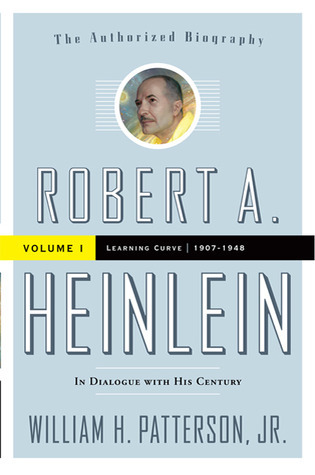What do you think?
Rate this book


Robert A. Heinlein (1907-1988) is generally considered the greatest American SF writer of the 20th century. A famous and bestselling author in later life, he started as a navy man and graduate of Annapolis who was forced to retire because of tuberculosis. A socialist politician in the 1930s, he became one of the sources of Libertarian politics in the USA in his later years. His most famous works include the Future History series (stories and novels collected in The Past Through Tomorrow and continued in later novels), Starship Troopers, Stranger in a Strange Land, and The Moon is a Harsh Mistress.
Given his desire for privacy in the later decades of his life, he was both stranger and more interesting than one could ever have known. This is the first of two volumes of a major American biography. This volume is about Robert A. Heinlein's life up to the end of the 1940s and the mid-life crisis that changed him forever.
622 pages, Hardcover
First published August 17, 2010
The beginnings of Heinlein's career are interesting, of course, and yet so, too, are the details of the boy's relentless self-education, the youth's career in the Navy before being invalided out due to tuberculosis, and--though, at least for myself, to a lesser extent--his early Leftist political activity. Patterson reveals Heinlein's 1929 marriage to Eleanor Curry, a year-long union that was lost to history until the twenty-first century, but it is the story of his 1932-1947 marriage to Leslyn MacDonald that is particularly eye-opening. Heinlein's second marriage--which for decades was called his first--is something about which most fans knew only vaguely, as his marriage to Virginia Gerstenfeld from 1948 onward always loomed largest. Robert and Leslyn were, however, married for fifteen years, and it is quite touching to see, not just from Patterson's evaluation but also even from Robert's letters to Ginny after the breakup, how truly devoted they were for so long. It is interesting as well--though not surprising, perhaps, to anyone who has read Heinlein's fiction from the 1960s onward--to learn that Robert and Leslyn occasionally visited nudist resorts, and that his first two marriages were open, or "swinging," relationships. Most likely Heinlein was a fairly private person in any event, but such details help explain his drive to bury so thoroughly the history of his life with Leslyn. These were things that a children's author of the late 1940s and 1950s simply could not afford to have noised about.
Patterson's book follows the Heinleins' work as civilian employees for the Naval Air Experimental Station during the Second World War, Robert's momentous move into the "slicks" and the beginning of what was to be a twelve-year association with Scribner's for a series of "juvenile" novels, and Leslyn's decline into alcoholism and the simultaneous growth of the relationship between Robert and Ginny. The ultimate failure of Heinlein's second marriage is surprisingly bittersweet after reading of the long years of such companionship and support, but of course we, the readers of half a century later, knew it was coming. The rise of Heinlein's final love, however, is perhaps even more reassuring, and thus a fine place for this first volume to end.